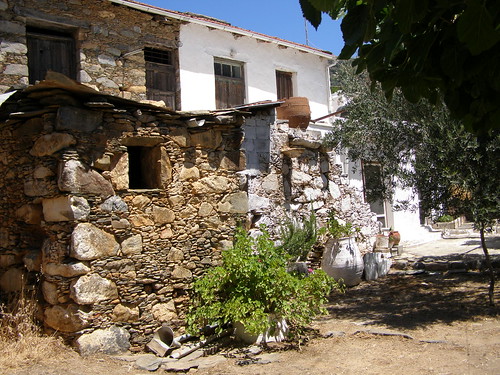
Every year, Aleko comes to Crete to spend the summer in a run-down house built by grandfather in a small village close to one of the most impressive nature spots on the south-western coast of Hania, Elafonisi, which also sports probably the most aesthetically alluring beach in the region of Hania: crystal clear water, whose rippling ground-level waves roll onto coral-pink sand, tucked away in a remote area of the province which was once extremely difficult to access. The wind always blows hard here, making the water icy cold, even in the middle of summer; maybe it's done on purpose, to keep too much development away from the area, on which point of course it has succeeded.
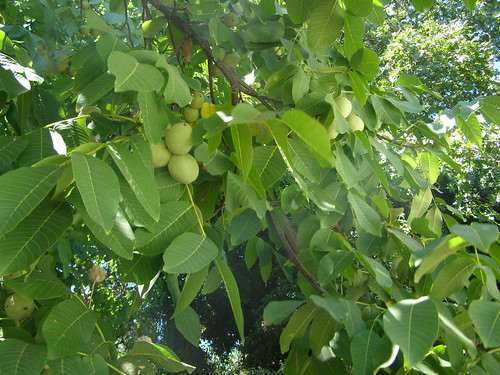
To get to Aleko's house, we drive off the main highway onto very narrow country roads, passing a few sleepy villages, like Topolia, which is famous for the freshness of its water. It is located on a rise, so that the melting snow from the mountains surrounding it passes the area before it gets to the town of Hania itself. We sat under a walnut tree in the central square and cooled ourselves off with some of that refreshing water, with which people fill up plastic containers and take home with them (it's legal).
The plaque at the square reads as a mantinada, a form of Cretan poetry:
Drink water from Topoliana,
which Nature freely gives,
the whole of our community
welcomes you to our village.
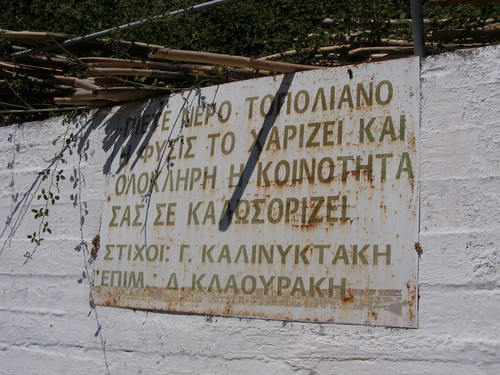
From this point on, the road narrows to a single lane, as it passes through the Gorge of Topolia (not the famous Samaria Gorge, but a narrow chasm nevertheless. A tunnel was built through the mountain. The traffic lights indicate which direction of the traffic has the right of way: only one car fits its width.
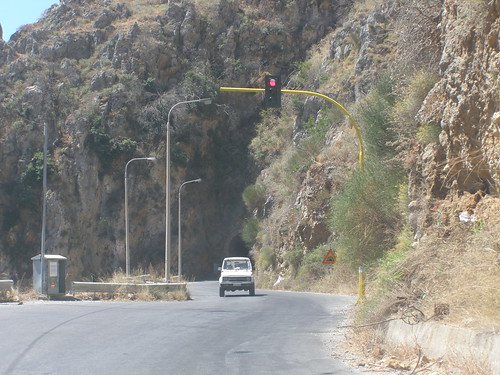
The tunnel leads directly to a hillside containing a cave of archaeological importance, turned into a shrine dedicated to St Sophia. Church services, even wedding ceremonies and baptisms, are held here, especially when the family concerned has been ''promised' to the saint (another meaning of dedicated: 'ταμένος').
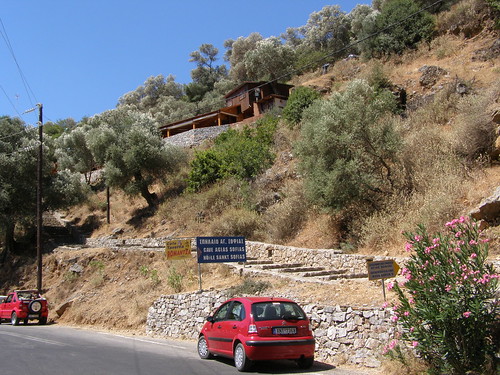
The road then passes through the village of Elos, which gets its name from 'swamp'. It used to be a breeding ground for malaria, but is now one of the most verdant villages in Hania, home to the oldest vineyard in Crete, and an environmentally important eco-system with native flora and fauna. Water runs freely in this area, the tall trees and dense foliage being living proof of this.
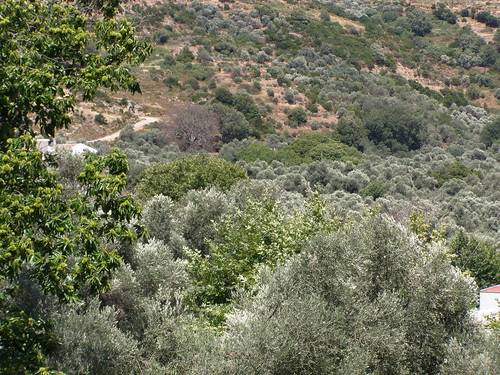
The region also has one of the biggest chestnuts plantations in all of Greece.
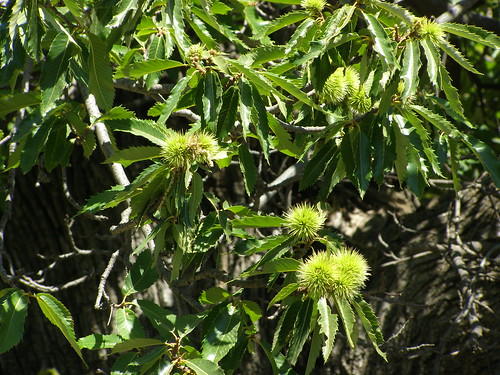
Whenever we visit him at his house, he and his wife always make us feel very welcome: traditional Cretan festive fare is the norm - kalitsounia with mizithra, kalitsounia with vlita, summer salad, boiled chicken with pilafi, pork steaks and potato chips, all followed by a juicy watermelon. he was only sorry that we oculdn't sit outside because the wind was roaring upwards of 7 on the Beaufort scale today (the plastic chairs were flying off the verandah).
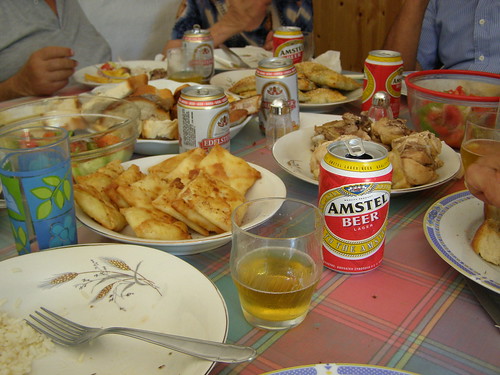
On the way to Elafonisi from Aleko's house, the road takes you past the monastery of Hrisoskalitissa (meaning 'the Virgin of the golden steps') built on the rocks above the roughest coast of the western shoreline of Hania; it stands like a sparkling gem, glistening under the glorious sun. There is a port close by to Hrisoskalitissa monastery; the area once played host to a large customs office, due to the area's inaccessibility to Hania. These times are now long gone, with the coming of extensive road networks.
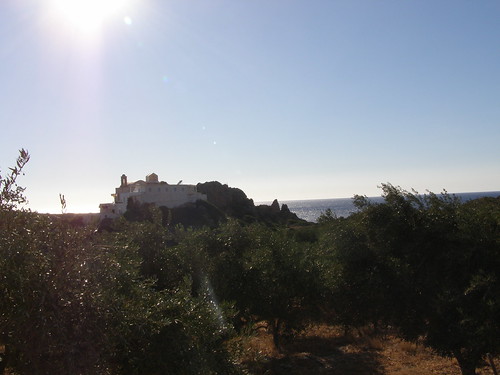
The sandy dirt road leading to the beach has been widened since the first time I came to Elafonisi, but nature is still in its rawest form here. The hills rise high and dry above Elafonisi, while the coast is bordered by low dense shrubs resulting from the high winds which do not allow trees to gain any height. The trees have taken the shape of an upside down witches broom, being swept to one side as the wind blows hard against them. The water is shallow for a long way out, and you can walk all the way to an islet in the middle of the sea, from which the area takes its name, the 'nisi' in 'ealfonisi' means 'island', while 'elafo' comes from the word 'elafi', meaning 'deer': I didn't see any!
Life in the main centers of Crete do not have that air of island life that many of the smaller islands in the Aegean Sea do: fantastic beaches, seaside cafes, peace and quiet. Like many other south-west coastal towns of Crete, Elafonisi reminds you that Crete is in fact an island, even if you do have to drive a long way out to prove it.

Aleko was born in the inter-war period and raised in the village of Vathi. In his youth, there were 120 children living there; now, there are about forty permanent residents in the whole area, and they're not at all young. The houses are all still standing, but the owners have moved away to Hania, or they have immigrated to the New World, for obvious reasons: the industrial boom, better working conditions away from the fields, a higher standard of living, better chances of education for the young.
During the war, he witnessed many atrocities, not just against the people of the village, but also against what they held dear to them. Hrisoskalitssa monastery became the Nazi headquarters in the area, where supplies of weapons were also kept: guns, bullets, bombs, grenades, mines. One day, a group of Cretan resistance fighters attacked some Nazi soldiers and one of them was killed. In revenge, the enemy began to raze the village, and started rounding up the men. Aleko's house was not in the village centre, but his family could see the Nazis coming down the hill. It was mid-August in 1943, and their helmets shone like light bulbs in the sun. The family left the house and hid in the fields.

Aleko's father wasn't with his family at that moment; he'd been visiting someone in another area. He managed to get away just in time and reach his house. He found it empty and suspected what had happened. He dressed up in his mother's clothes and made his way to the fields. The Nazis paid no attention to him as they passed him on the road. When the family finally made their way back to the house, they found it burnt down, the rocks and stones in the walls in ruins. They salvaged what they could and moved their belongings into the barn where they kept their animals. Above the barn was another room, the 'onta' (a word of Turkish origin, used to denote a room above the ground floor), where the family remained until the mid-60s.
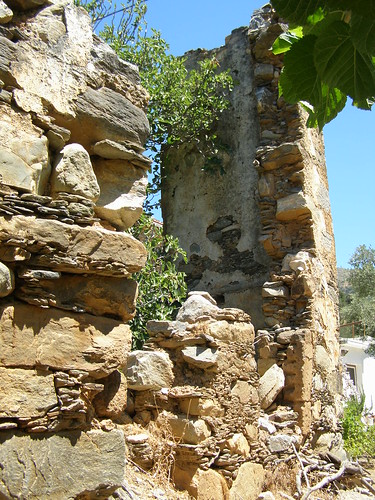
At about this time, everyone had gotten tired of living like paupers. The end of the war saw peace, but it also saw great hardship and poverty. One by one, the members of the family started moving away. Aleko's sister went to Athens, where she married and had a family. His brother went to New Zealand, and did likewise. The simple room of the house is filled with photographs of relatives abroad.
Aleko was interested in astrology, watching the moon travel from one side of the sky to the other, observing the patterns the stars make, looking out for lights in the sky that move like a comet and whizz across the darkness. His liking for star-gazing is perfectly understandable; after dusk, there was no light int he village, as it was not electrified until the mid-70s. The stars and the moon in the sky always led the way. It was only in his village that he could see the stars; wherever else he lived and worked, there were too many artificial lights obscuring the view of the clear night sky.
But there was no call for paid work of this kind in the village, so he too had to leave and get a job, like everyone else who left the area. His first job was in construction in Hania. He hated it. He grabbed the first opportunity to get on board a ship bound for New Zealand where his brother lived, leaving behind his blind and widowed mother, who eventually moved into a retirement home in Hania.
During his time in New Zealand, he wondered who would look after his trees: apart from the ubiquitous Cretan olive trees, there were fig trees,
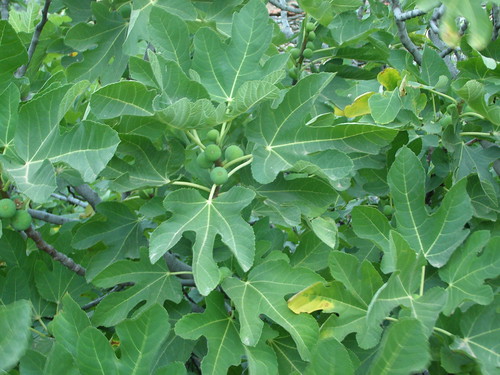
almond trees,
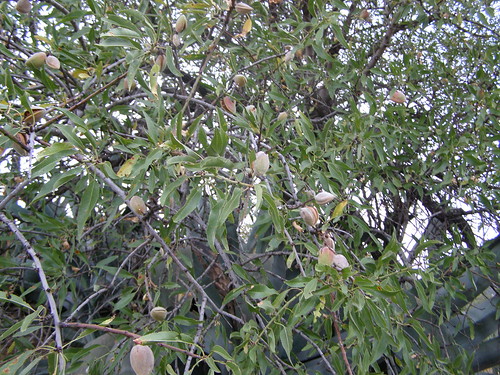
and cactus figs in his back yard.
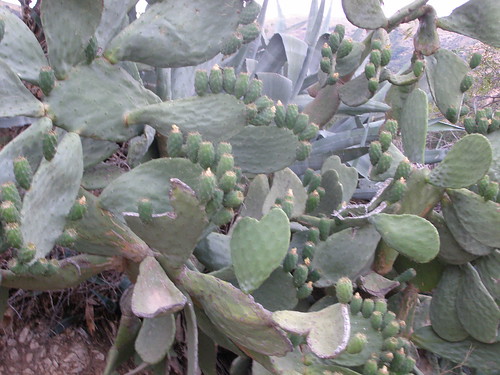
Aleko moved back to Greece with his family in the late 70s after working for a few years in New Zealand, with the intention to restore the family home in Crete and live there. Are you crazy? said his sister. What are you going to do for a living? Pick olives? Against his wishes, he stayed in Athens and found work in the ship building yards, earning just enough to make ends meet. But he never forgot his parents' house. Every year he came down to see his mother in the old people's home, and stayed at his 'patriko', restoring a wall here or a window there, adding a few bits of furniture where necessary. Now that he's retired, he can enjoy the whole Greek summer in the house where he was born. And we are very lucky that we can spend a part of our summer where nothing can be heard except the wind and cicadas.
©All Rights Reserved/Organically cooked. No part of this blog may be reproduced and/or copied by any means without prior consent from Maria Verivaki.
This comment has been removed by the author.
ReplyDeletebeer has been known all over europe since ancient times; i can't think why you would want to call the beer on the table non-traditional, unless you want to show me up as ignorant of the non-traditional culinary practices that I haven't noticed creeping into the idyllic island I am lucky to dwell in.
ReplyDeleteWhat a story! Thanks for the beach picture. After you mentioned a beach, I was longing for a picture!
ReplyDeleteBeautiful!
ReplyDeletemaria, I just discovered your website for the first time yesterday. I'm so excited! I live in the United States but Hania is always in my heart. I spent alot of my childhood there and some summers as a teenager. As I read your entries I imagine myself there and it makes me so happy. I see all your pictures and I feel as if I am there because I have been to all these places. I can't wait to read your next entry.
ReplyDeletehi maraki, i'm glad to hear you're enjoying what you're reading. it's nice to know that you feel the same way about hania as i do. all places have their ups and downs, but we all try to be happy with our lot. i hope we can meet up when you are next in hania
ReplyDeleteMaria I am glad that I can now read your posts without having the problems I had in the past. I shall try and read as many posts as I can but today you've jogged some good and bad memories. During one of our visits to Chania we went to Elafonisi and you are right that it's always windy and as my daughter and I were swimming we had the worst experience as the waves kept pushing us into deep water and it was extremely difficult to swim back to the shore. Nevertheless it is a beautiful place and we had the best lunch on our way back at Elos with tsigariasto, stuffed courgette flowers etc.
ReplyDeleteWhat a fascinating story. Thanks for sharing.
ReplyDeleteOh, I so very much enjoyed reading this story as well as looking at the photos that accompany it. I love the picture of the table full of food! It reminded me of my family gatherings! Excellent post!
ReplyDeleteTo sepnd the summer in Greece would be a dream come true:D
ReplyDeleteLovely profile Maria, and very fine writing.
ReplyDelete